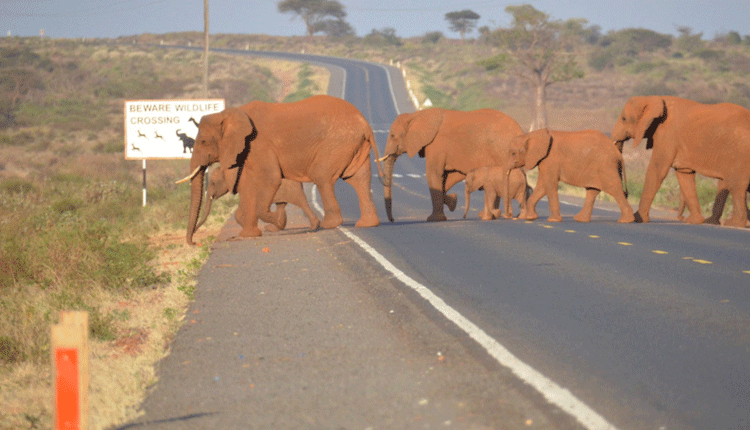Drought exposes jumbos in Amboseli to danger

The severe drought ravaging the country has led to increased human-wildlife conflicts at the Amboseli Ecosystem.
Land of jumbos as its moniker (rightfully) goes, received less than 50 per cent of average rainfall, with the increasing dry spells continuing to wreak havoc.
Around the Amboseli Ecosystem, drought has led to human-wildlife conflicts catalysed by a raft of issues from human settlements to commercial use of land in areas perceived to be wildlife habitats and corridors.
During the recent Tembo Naming Festival at Amboseli, Kenya Wildlife Service Director-General Brigadier (rtd) John Waweru noted that wildlife conservation faces challenges such as poaching, climate change and loss of habitat.
Waweru said in KWS Strategic Plan 2019-2024, intervention actions have been developed to protect and conserve wildlife with three key pillars; conservation, collaboration and enterprise.
Naming ceremony included collaring a 20-year female elephant, which he says is part of collaboration.
“There has been a rise in human-elephant conflict, caused by an increase in human population adjacent to wildlife habitats,” acknowledged Cabinet Secretary for Tourism and Wildlife, Najib Balala during the event in Amboseli.
He added: “The goal of the #TemboNamingFestival is to secure a future for elephants and their habitats in peaceful co-existence with humans.”
Elijah Naini, a conservationist and Treasurer of the Olgulului-Ololarashi Group Ranch (OOGR), which forms part of Amboseli Ecosystem, says their conservation and development plan 2011-16 established a number of zones that included the Pastoralism Development and Wildlife zone.
“Humans can go begging with a bowl for food, the government can bring us relief food, but what about these animals?
Who is going to take care of them? While we cannot dispute, it is ones right to use his land the way they’d want. However, I think it is important we look at the future,” he said.
Permanent zone
“This is the permanent zone in OOGR where pastoralists land use is actively promoted and developed.
However, it is also crucial for wildlife and contains key dispersal areas and migration routes that need to be actively managed and protected,” he says.
Naini states that another mapped area, Cultivation zone, is focused on the rain fed and irrigated agriculture areas in the south-east and east of OOGR that have already been sub-divided.
According to the National Wildlife census 2021 report, the country is currently home to 36,280 elephants, a 12 per cent increase since 2014.
Surge has increased pressure on the landmass, which has also been dwindling due to change of land use.
Chunks of community land that would previously harbour elephants during drought, has now been converted to farming.
For instance, the KiliAvo farm, a 180-acre avocado farm that has been set up in one of the corridors used by animals.
Francis Legei, commanding officer at Big Life Foundation, says cases of human-wildlife conflicts have been on the rise due to a number of issues with drought propagating the clashes at the moment.
Foundation is a non-profit conservation organisation focused on preserving wildlife and habitats of the Amboseli-Tsavo-Kilimanjaro ecosystem of East Africa through community-based and collaborative strategies,
“Vision 2030 Wildlife Migratory Corridors and Dispersal Areas report highlights the Kimana corridor as among the most threatened within the Greater Amboseli ecosystem.
Due to the drought, elephants are forced out of the park and migrate towards farms. This leads people to retaliate and kill the animals,” he explains.
Legei continues to say: “When we find such cases, we normally record them in our data base then map out the area. When the animal is killed by KWS we also record.”
Organisation has four mobile units to help drive the elephants back to safer zones.












